From Macro to Micro: Impact of Smart Turbine Energy Harvesters (STEH), on Environmental Sustainability and Smart City Automation
Abstract
:1. Introduction
2. Literature Review of Digitised Technology and Project Management for Turbine Energy Sustainable Goals
2.1. Waterfall Project Management Methodology
2.2. Turbine Energy Generators for Wind and Water
2.3. Requirements for Setting Up Turbine Grid-Connected Energy Source
- Good site or location: owing to the fact that some sites are windier than others, a good land or location for the turbine installation must be decided. The amount of energy realisable is usually proportional to the cube of the wind speed. An average of 7 m/s wind speed is considered sufficient, and most of the time, top-of-hill locations are preferable for optimal exposure of macro or mini turbines to strong winds [29].
- Good grid connection: a suitable three-phase electrical connection is required to be connected to; an 11 KV substation or transformer is required for a mini grid turbine while up to 33 KV power lines grid connection might be required by a macro/bulk turbine farm.
- Good and sufficient noise separation: the neighbourhood of the turbine plant must be well separated from noise pollution; there are stringent rules to the permissible noise level depending on the category of turbine either macro or mini.
- Good site access: turbines could be very large or heavy, especially those for macro grid plants, hence there is need to make choices of site to be accessible to good roads and tracks with strong bridges for the delivery of large constituents parts of the turbine and other equipment.
- Consideration for environmental and landscape designation: peat bog and bird strikes should be avoided. Those sites with good landscape may not be able to obtain planning consent, since they are useful as natural beauty or park areas.
2.4. Macro/Bulk Turbine Energy Generator
2.5. Mini Turbine Energy Grid
2.6. Micro Turbine Energy Generator
2.7. Smart Turbine Energy Harvester (STEH)
3. Methodology
Waterfall PMM Using Gantt Chart with Requirement Processes
- Macro Turbine Grid-Connected Energy Source;
- Mini Turbine Grid-Connected Energy Source;
- Micro Turbine Energy Harvester (With Battery);
- Smart Turbine Energy Harvester (Battery-Less STEH).
4. Results
4.1. Comparative Analysis of the Essential Requirements of Setting Up a Turbine Supplied Grid from Macro to Micro Using Waterfall Gantt Chart
- Magnitude, requirements and the resulting output based on the intended load capacity.
- Energy predictability: this is a function of weather and the changing season of the year, relative to the geographical location of the site of the plant, among other atmospheric and environmental conditions;
- Controllability: This is where the PM has to put in a lot of brainstorming and effort in order to arrive at a suitable forecast for the particular turbine energy required. Hence, much emphases are laid on execution of the project for the PMM of this study.
4.2. Comparative Analysis Using Waterfall PMM Requirements
5. Discussion
Comparative Advantages of STEH
- Ecology friendliness and environmental sustainability:The sustainable developmental goals of STEH as advantages over other categories of turbine energy sources are as illustrated in Figure 10. The energy harvested by STEH is clean, ubiquitous, long lasting, and also sufficient to power the attached IoT sensors for applications such as Internet of Medical Things (IoMT), Internet of Remote Things (IoRT), Internet of Mobile Things (IoMobT), and other sustainable goals of smart city, as shown in Figure 10.
- Battery-Less: There is a conscious effort to go green in sustainability issues relating to energy usage, also technology digitisation has began to have concerns for battery usage and disposal for reasons of cost of replacement; disposal; and toxicity to the ecology system [22,44]. Additionally, in most cases of reliability issues, IoT systems using batteries such as those of micro turbine harvester can pack up without warning, and that is not desirable in rescue missions; health monitoring, or in the face of emergencies, as shown in Figure 10. Therefore, STEH having all these conditions in consideration can be proposed to be preferable to a micro turbine harvester that uses battery.
- Cost Efficiency:
- (i)
- STEH is cost saving in that it requires few items and off-the-counter components to set up a unit. The main structure of the model is an 18-blade turbine, which is a passive device in most Portuguese home chimney towers, but has gained a derived usage in this research. This is informed in the reason our SWDT-EH is also called ‘Chimney Turbine Energy Harvester’ (CTEH).
- (ii)
- STEH is also cost saving for the reason of minimal number of man power requirement unlike macro and mini grid set ups that have need for large number of labour for different tasks as shown in Table 1. Although the team player can be repeatedly multiplied at several locations within the smart city.
- (iii)
- There is no cost incurred for cabling and energy termination to the IoT nodes: unlike macro and mini turbine grids, that require high cost of cabling for transmission, distribution and termination to the loads, STEH is more of energy boxes, that has both the energy units and the IoT attached to the same structure, hence the cost of cabling is completely eradicated.
- (iv)
- There is little or no energy wastage: there is usually special considerations for energy loss in the large turbine plants during transmission to the grid and distribution from grid to load centres. However, in the case of STEH, there are no such procedures hence no losses, since energy are being harvested and consume at same instance. This makes STEH has ubiquitous and self sustainability advantages.
- (v)
- There is reduced cost of maintenance or no maintenance at all in the case of STEH as against the other categories of turbines. This is because once STEH are deployed either underwater or on house roof tops, they are required to be long lasting with long lifespan of the IoT node.
- (vi)
- There is complete eradication of cost of battery procurement and disposal in STEH. This is because the IoT attached is constantly taking environmental data, hence since energy is also continuously harvested from the wind or water as the case may be, once it arrives, there’s a little hold by the scavenger in the power management circuit, then it is released for onward supply to the IoT.
- Time Saving Capability:
- (i)
- The period of setting up is short as shown in Figure 9, compared to other categories, STEH is observed to arrive at the execution stage faster in about 6 weeks, and it also get to deployment stage earlier than others, unlike the turbine plants that require land procurement, permission to be obtained, and careful consideration for many factors and feasibility studies as shown in Table 1.
- (ii)
- Short time is required for termination to the load, and STEH is always present with the load, hence it is time saving in the situation of emergencies or rescue operations, instead of waiting on calling grid protocols like the bulk turbine.
- (iii)
- There is no time wastage for battery replacement or any inactivity of system due to breakdown as a result of battery pack up.
- Man power: there is reduced man power usage in this project, a maximum of 2 or 3 personnel are sufficient to make a team, this brings about a reduction in cost of manpower. However, it has a social economic advantage in that several unit of this model can be deployed in the smart city at different locations at the same time with individual IoT nodes, hence hundreds of team players could be engaged in fabricating this same model at the same time within the smart city.
6. Conclusions
Author Contributions
Funding
Institutional Review Board Statement
Informed Consent Statement
Data Availability Statement
Acknowledgments
Conflicts of Interest
Abbreviations
| STEH | Smart Turbine Energy Harvester |
| PM | Project Management |
| IoT | Internet of Things |
| PMM | Project Management Methodology |
| EH | Energy Harvesting |
| RI | Return on Investment |
| GHGE | GreenHouse Gas Emission |
| WSN | Wireless Sensor Network |
| RFID | Radiofrequency Identification |
| SWDT-EH | Smart Wind Turbine Energy Harvester |
| SWRT-EH | Smart Water Turbine Energy Harvester |
| SHM | Structural Health Monitoring |
References
- Nair, K.; Kulkarni, J.; Warde, M.; Dave, Z.; Rawalgaonkar, V.; Gore, G.; Joshi, J. Optimizing power consumption in iot based Wireless Sensor Networks using Bluetooth Low Energy. In Proceedings of the 2015 International Conference on Green Computing and Internet of Things (ICGCIoT), Greater Noida, India, 8–10 October 2015; pp. 589–593. [Google Scholar]
- Nandi, M.; Sarkar, S. Coverage Problem of sensor network in Continuous Region. In Proceedings of the IEEE In 2019 International Conference on Ubiquitous and Emerging Concepts on Sensors and Transducers (UEMCOS), Kolkata, India, 25–27 April 2019; Volume 1, pp. 1–8. [Google Scholar]
- Behrouzi, F.; Nakisa, M.; Maimun, A.; Ahmed, Y.M. Global renewable energy and its potential in Malaysia: A review of Hydrokinetic turbine technology. Renew. Sustain. Energy Rev. 2016, 62, 1270–1281. [Google Scholar] [CrossRef]
- Balat, M. A review of modern wind turbine technology. Energy Sour. 2009, 31, 1561–1572. [Google Scholar] [CrossRef]
- Lyu, X.; Jia, Y.; Xu, Z. A novel control strategy for wind farm active power regulation considering wake interaction. IEEE Trans. Sustain. Energy 2019, 11, 618–628. [Google Scholar] [CrossRef]
- Cammarano, A.; Petrioli, C.; Spenza, D. Online energy harvesting prediction in environmentally powered Wireless Sensor Networks. IEEE Sens. J. 2016, 16, 6793–6804. [Google Scholar] [CrossRef]
- Munteanu, I.; Bacha, S.; Bratcu, A.I.; Guiraud, J.; Roye, D. Energy-reliability optimization of wind energy conversion systems by sliding mode control. IEEE Trans. Energy Conv. 2008, 23, 975–985. [Google Scholar] [CrossRef]
- Jung, H.J.; Lee, S.W.; Jang, D.D. Feasibility study on a new energy harvesting electromagnetic device using aerodynamic instability. IEEE Trans. Magn. 2009, 45, 4376–4379. [Google Scholar] [CrossRef]
- Carlin, P.W.; Laxson, A.S.; Muljadi, E.B. The history and state of the art of variable-speed wind turbine technolog. Wind Energy Int. J. Progress Appl. Wind Power Conv. Technol. 2003, 6, 129–159. [Google Scholar]
- Clausen, P.D.; Wood, D.H. Recent advances in small wind turbine technology. Wind Eng. 2000, 24, 189–201. [Google Scholar] [CrossRef]
- Chin, C.; Spowage, A.; Yap, E. Project Management methodologies: A comparative analysis. J. Adv. Perform. Inf. Value 2012, 4, 106–118. [Google Scholar] [CrossRef]
- Van Casteren, W. The Waterfall Model and the agile Methodologies: A comparison by project characteristics. Res. Gate 2017, 2, 1–6. [Google Scholar]
- Thesing, T.; Feldmann, C.; Burchardt, M. Agile versus Waterfall Project Management: Decision Model for Selecting the Appropriate Approach to a Project. Procedia Comput. Sci. 2021, 181, 746–756. [Google Scholar] [CrossRef]
- Kaldellis, J.K. The contribution of small hydro power stations to the electricity generation in Greece: Technical and economic considerations. Energy Policy 2007, 35, 2187–2196. [Google Scholar] [CrossRef]
- Piano, S.L.; Mayumi, K. Toward an integrated assessment of the performance of photovoltaic power stations for electricity generation. Appl. Energy 2017, 186, 167–174. [Google Scholar] [CrossRef] [Green Version]
- Danlami, B.A.; Eunice, A.A.; Jimoh, Y.A. Simulation of a Hybrid Power Generation System (A Case Study of Oke Eda, Akure, Ondo State, Nigeria). Am. J. Modern Energy 2019, 5, 23–34. [Google Scholar] [CrossRef]
- Granovetter, M.; McGuire, P. The making of an industry: Electricity in the United States. Sociol. Rev. 1998, 46, 147–173. [Google Scholar] [CrossRef]
- Kaldellis, J.K.; Zafirakis, D. Optimum energy storage techniques for the improvement of renewable energy sources-based electricity generation economic efficiency. Energy 2007, 32, 2295–2305. [Google Scholar] [CrossRef]
- Hirst, E.; Kirby, B. Electric-Power Ancillary Services; Oak Ridge National Laboratory: Oak Ridge, TN, USA, 1996; pp. 1–48. [Google Scholar]
- Hebra, A. The reality of generating and transmitting ultrahigh voltage power, Part 1. IEEE Instrum. Meas. Mag. 2012, 15, 26–31. [Google Scholar] [CrossRef]
- Akin-Ponnle, A.E.; Carvalho, N.B. Energy Harvesting Mechanisms in a Smart City—A Review. Smart Cities 2021, 4, 476–498. [Google Scholar] [CrossRef]
- Espinosa, D.C.R.; Bernardes, A.M.; Tenório, J.A.S. Brazilian policy on battery disposal and its practical effects on battery recycling. J. Power Sour. 2004, 137, 134–139. [Google Scholar] [CrossRef]
- Nehrir, M.H.; Wang, C.; Strunz, K.; Aki, H.; Ramakumar, R.; Bing, J.; Miao, Z.; Salameh, Z. A review of hybrid renewable/alternative energy systems for electric power generation: Configurations, control, and applications. IEEE Trans. Sustain. Energy 2011, 2, 392–403. [Google Scholar] [CrossRef]
- Aderogba, K.A. Global warming and challenges of floods in Lagos metropolis, Nigeria. Acad. Res. Int. 2012, 2, 448–468. [Google Scholar]
- Qazi, A.; Hussain, F.; Rahim, N.A.; Hardaker, G.; Alghazzawi, D.; Shaban, K.; Haruna, K. Towards sustainable energy: A systematic review of renewable energy sources, technologies, and public opinions. IEEE Access 2019, 7, 63837–63851. [Google Scholar] [CrossRef]
- Hammons, T.J.; Boyer, J.C.; Conners, S.R.; Davies, M.; Ellis, M.; Fraser, M.; Holt, E.A.; Markard, J. Renewable energy alternatives for developed countries. IEEE Trans. Energy Conv. 2000, 15, 481–493. [Google Scholar] [CrossRef]
- Perrier, Q.; Guivarch, C.; Boucher, O. Diversity of greenhouse gas emission drivers across European countries since the 2008 crisis. Clim. Policy 2019, 19, 1067–1087. [Google Scholar] [CrossRef]
- Bell, T.E.; Thayer, T.A. Software requirements: Are they really a problem? In Proceedings of the 2nd International Conference on Software Engineering, San Francisco, CA, USA, 13–15 October 1976; pp. 61–68. [Google Scholar]
- Adhikari, J.; Panda, S.K. Overview of high altitude wind energy harvesting system. In Proceedings of the IEEE 2013 5th International Conference on Power Electronics Systems and Applications (PESA), Hong Kong, China, 11–13 December 2013; pp. 1–8. [Google Scholar]
- Muljadi, E.; Pasupulati, S.; Ellis, A.; Kosterov, D. Method of equivalencing for a large wind power plant with multiple turbine representation. In Proceedings of the 2008 IEEE Power and Energy Society General Meeting-Conversion and Delivery of Electrical Energy in the 21st Century, Pittsburgh, PA, USA, 20–24 July 2008; pp. 1–9. [Google Scholar]
- Ancona, D.; McVeigh, J. Wind turbine-materials and manufacturing fact sheet. Princet. Energy Resour. Int. LLC 2001, 19, 1–8. [Google Scholar]
- Camm, E.H.; Behnke, M.R.; Bolado, O.; Bollen, M.; Bradt, M.; Brooks, C.; Dilling, W.; Edds, M.; Hejdak, W.J.; Walling, R.; et al. Characteristics of wind turbine generators for wind power plants. In Proceedings of the 2009 IEEE Power and Energy Society General Meeting, Calgary, AB, Canada, 26–30 July 2009; pp. 1–5. [Google Scholar]
- Kekezoğlu, B.; Tanrıöven, M.; Erduman, A. A new wind turbine concept: Design and implementation. Acta Polytech. Hungar. 2015, 12, 3. [Google Scholar]
- Ciulla, G.; Franzitta, V.; Lo Brano, V.; Viola, A.; Trapanese, M. Mini wind plant to power telecommunication systems: A case study in sicily. Adv. Mater. Res. 2013, 622, 1078–1083. [Google Scholar] [CrossRef]
- Lapointe, C.; Gopalan, H. Numerical investigation of mini wind turbines near highways. J. Sol. Energy Eng. 2016, 138, 024503. [Google Scholar] [CrossRef]
- Carli, D.; Brunelli, D.; Bertozzi, D.; Benini, L. A high-efficiency wind-flow energy harvester using micro turbine. In Proceedings of the SPEEDAM 2010, Pisa, Italy, 14–16 June 2010; pp. 778–783. [Google Scholar]
- Hamdan, A.; Mustapha, F.; Ahmad, K.A.; Rafie, A.M. A review on the micro energy harvester in Structural Health Monitoring (SHM) of biocomposite material for Vertical Axis Wind Turbine (VAWT) system: A Malaysia perspective. Renew. Sustain. Energy Rev. 2014, 35, 23–30. [Google Scholar] [CrossRef]
- Bhutta, M.M.A.; Hayat, N.; Farooq, A.U.; Ali, Z.; Jamil, S.R.; Hussain, Z. Vertical axis wind turbine—A review of various configurations and design techniques. Renew. Sustain. Energy Rev. 2012, 16, 1926–1939. [Google Scholar] [CrossRef]
- Templin, R.J. Aerodynamic performance theory for the NRC vertical-axis wind turbine. NASA STI/RECON Tech. Rep. 1974, 76, 16618. [Google Scholar]
- Ro, K.D. Experiments on Hydrodynamic Performance of Weis-Fogh-Type Water Turbine. Trans. Canad. Soc. Mech. Eng. 2014, 38, 405–415. [Google Scholar] [CrossRef]
- Shirvanimoghaddam, M.; Shirvanimoghaddam, K.; Abolhasani, M.M.; Farhangi, M.; Barsari, V.Z.; Liu, H.; Dohler, M.; Naebe, M. Towards a Green and Self-Powered Internet of Things Using Piezoelectric Energy Harvesting. IEEE Access 2019, 7, 94533–94556. [Google Scholar] [CrossRef]
- Khajenasiri, I.; Estebsari, A.; Verhelst, M.; Gielen, G. A review on Internet of Things solutions for intelligent energy control in buildings for smart city applications. Energy Procedia 2017, 111, 770–779. [Google Scholar] [CrossRef]
- Golpîra, H.; Bahramara, S. Internet-of-things-based optimal smart city energy management considering shiftable loads and energy storage. J. Clean. Prod. 2020, 264, 121620. [Google Scholar] [CrossRef]
- Kowey, B.N. An Example of Planning for Sustainable Production: The Dry-Cell Battery Problem. Doctoral Dissertation, University of British Columbia, Vancouver, BC, Canada, 1990. [Google Scholar]
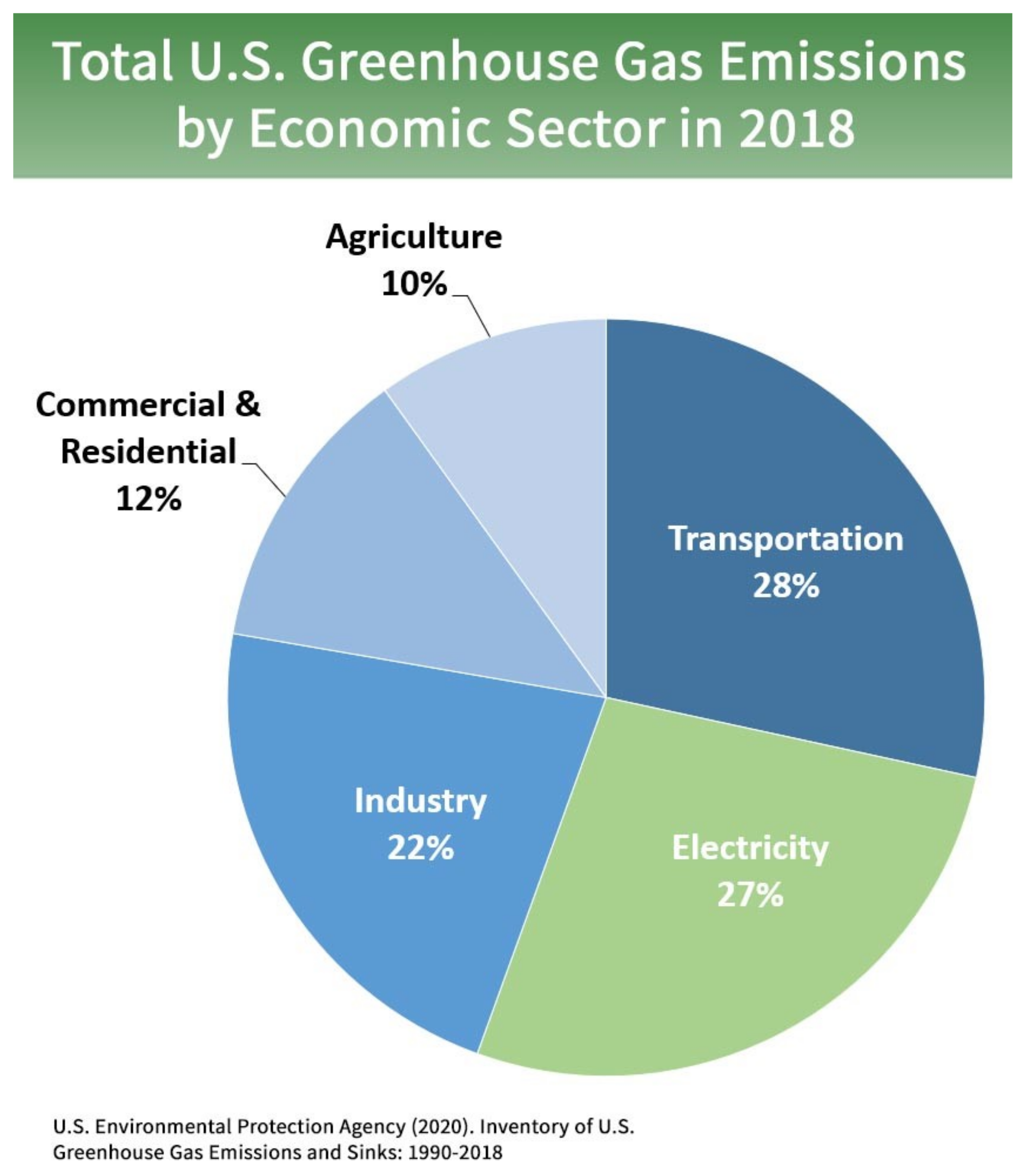
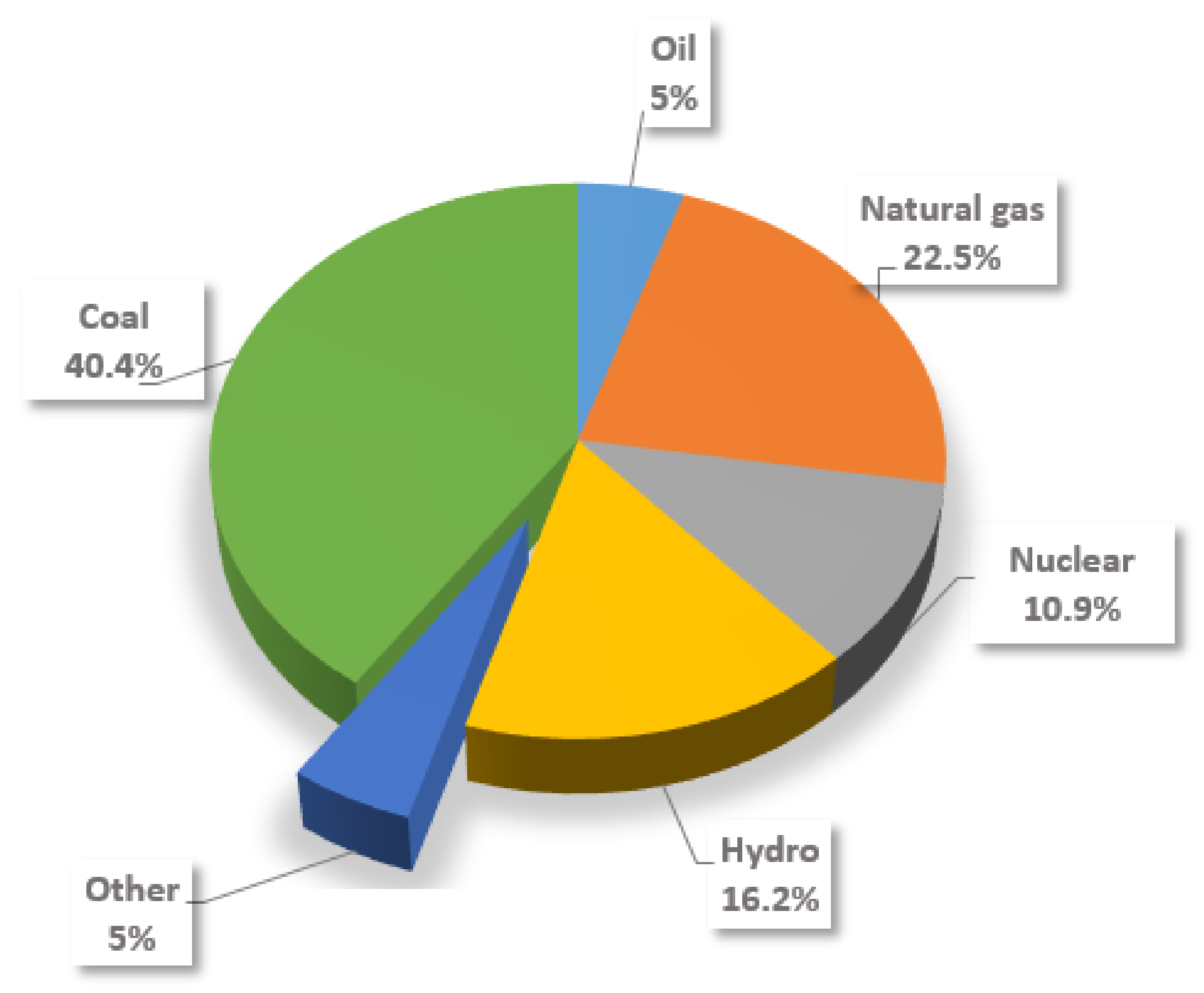

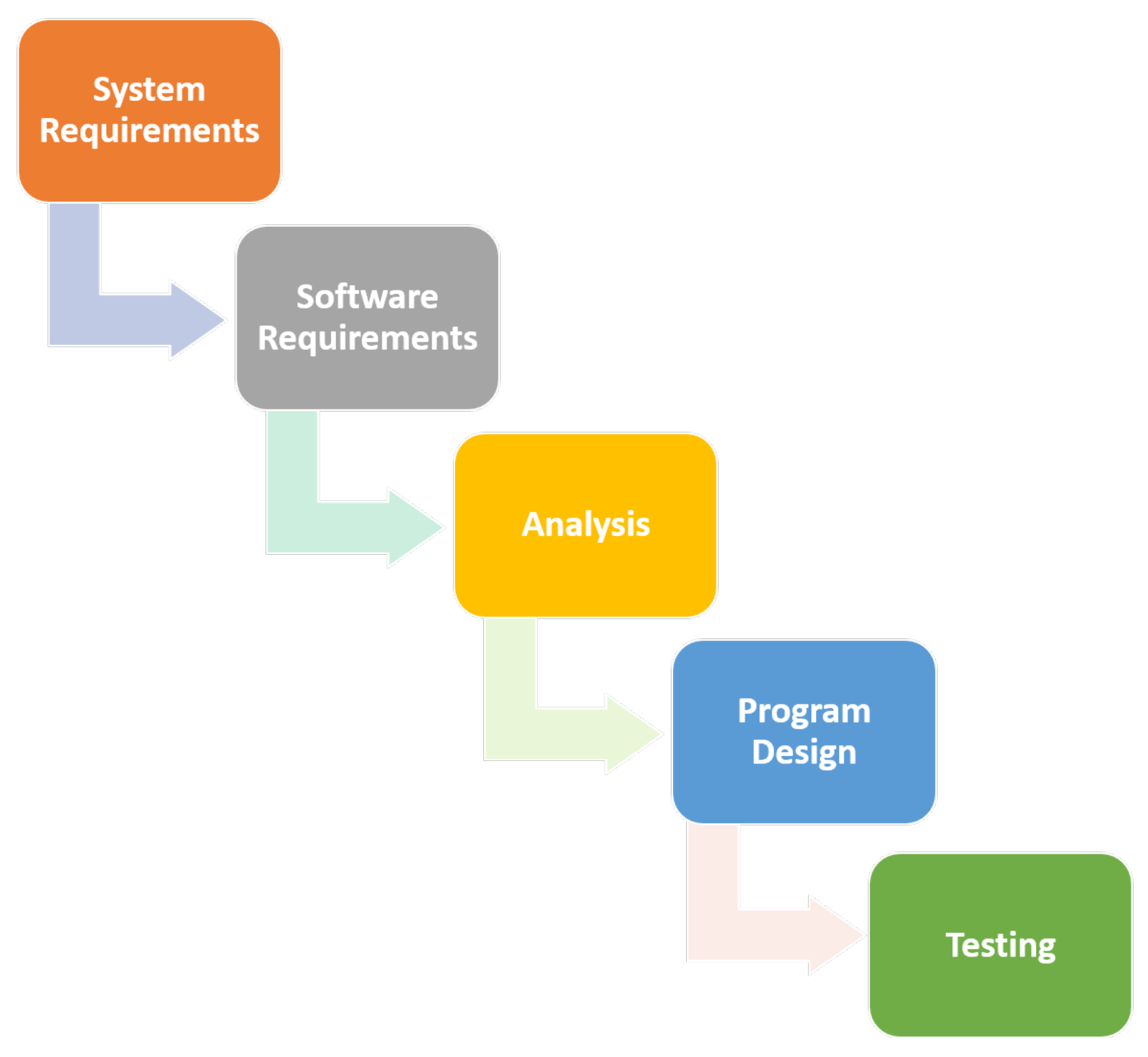
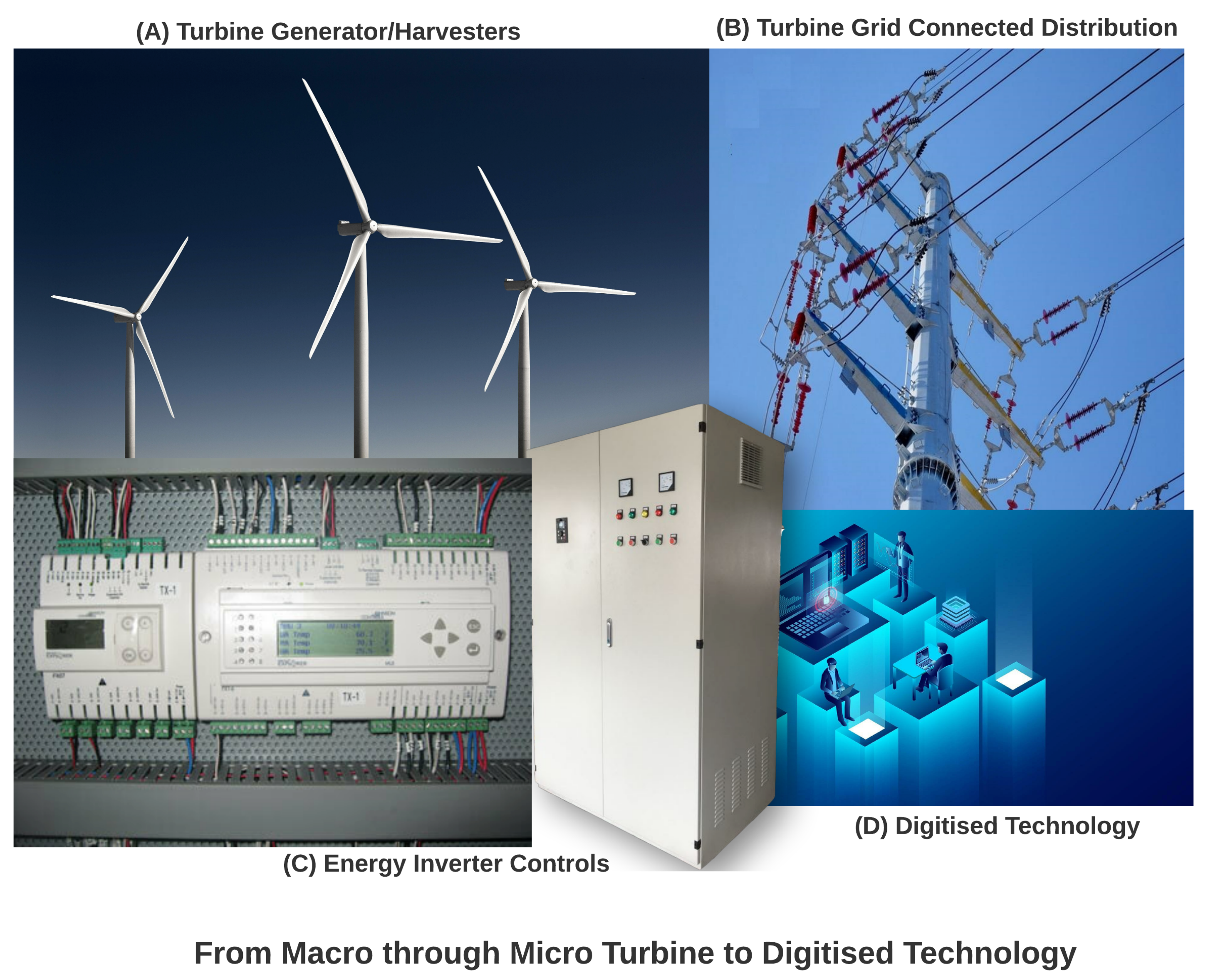




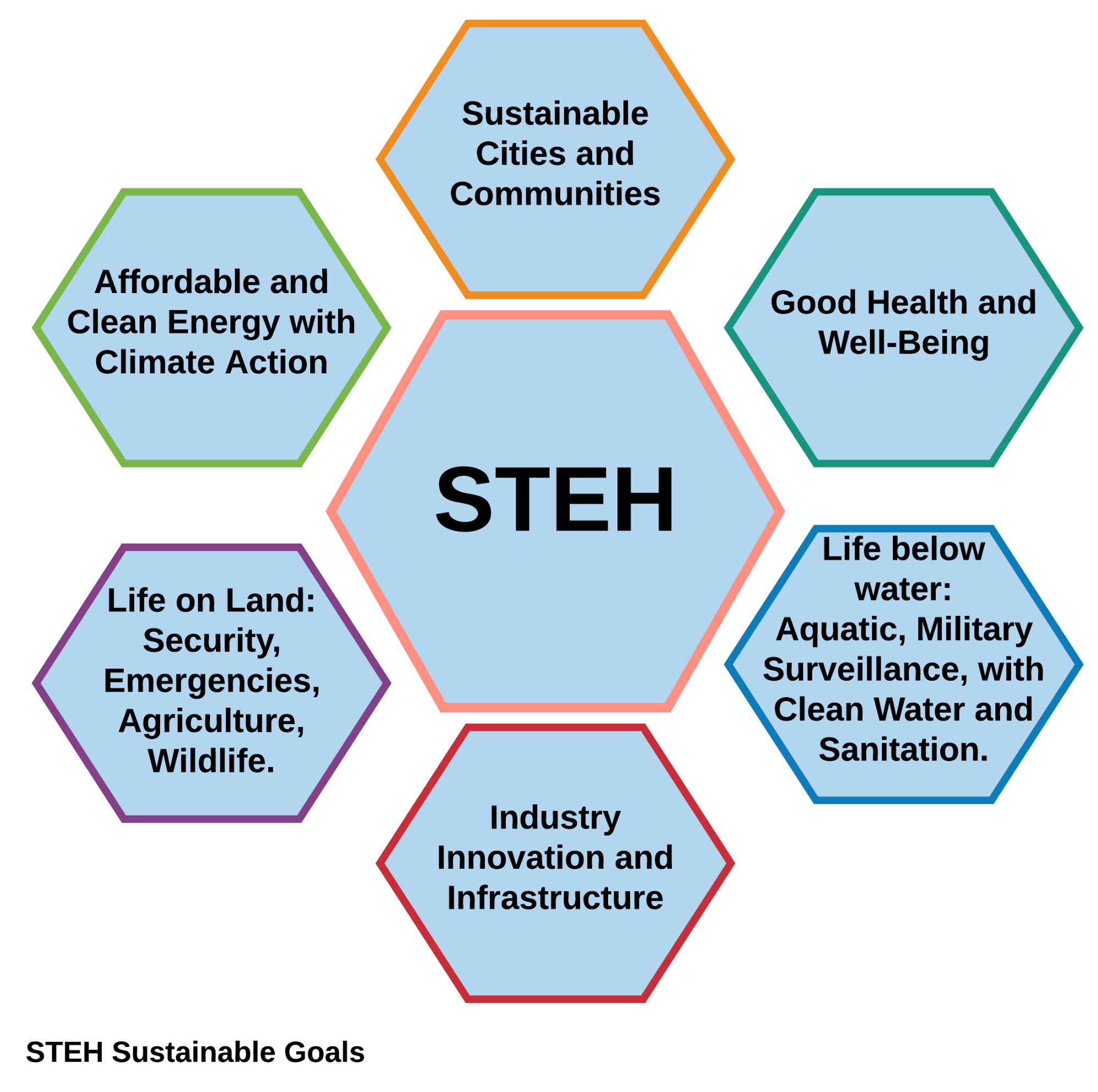
| PM Processes | Requirements | Macro/Bulk Turbine | Mini Turbine | Micro Turbine | STEH |
|---|---|---|---|---|---|
| Initiation | Feasibility study/ Energy demand survey | *R | *R | *R | *R |
| Turbine farm site location determination | *R | *R | *N/R | *N/R | |
| Land procurement | *R | *R | *N/R | *N/R | |
| Technical assessment of any physical/viability constraint | *R | *R | *N/R | *N/R | |
| Initial assessment of wind resources availability | *R | *R | *R | *R | |
| Initial assessment of project costs/Return on Investment | *R | *R | *R | *R | |
| Initial level of risk assessment | *R | *R | *R | *N/R | |
| Project initiation documentation | *R | *R | *R | *R | |
| Planning | Site preparation | *R | *R | *N/R | *N/R |
| Budgetary plan | *R | *R | *R | *R | |
| Ecological considerations (birds and bats) | *R | *R | *N/R | *N/R | |
| Physical constraints (Communication Links, power lines, water courses, etc.) | *R | *R | *N/R | *N/R | |
| Execution | Energy harvesting | *R | *R | *R | *R |
| Termination to the grid | *R | *R | *N/R | *N/R | |
| Load termination | *R | *R | *R | *R | |
| Metering | *R | *R | *N/R | *N/R | |
| Maintenance | Storage system management | *R | *R | *R | *N/R |
| Grid capacity management | *R | *R | *N/R | *N/R | |
| Energy optimization modelling | *R | *R | *R | *N/R | |
| Monitoring and control | Noise Pollution | *R | *R | *N/R | *N/R |
| Risk management control | *R | *R | *N/R | *N/R | |
| Project Management | End project and Signoff | *R | *R | *R | *R |
Publisher’s Note: MDPI stays neutral with regard to jurisdictional claims in published maps and institutional affiliations. |
© 2022 by the authors. Licensee MDPI, Basel, Switzerland. This article is an open access article distributed under the terms and conditions of the Creative Commons Attribution (CC BY) license (https://creativecommons.org/licenses/by/4.0/).
Share and Cite
Akin-Ponnle, A.E.; Pereira, F.S.; Madureira, R.C.; Carvalho, N.B. From Macro to Micro: Impact of Smart Turbine Energy Harvesters (STEH), on Environmental Sustainability and Smart City Automation. Sustainability 2022, 14, 1887. https://doi.org/10.3390/su14031887
Akin-Ponnle AE, Pereira FS, Madureira RC, Carvalho NB. From Macro to Micro: Impact of Smart Turbine Energy Harvesters (STEH), on Environmental Sustainability and Smart City Automation. Sustainability. 2022; 14(3):1887. https://doi.org/10.3390/su14031887
Chicago/Turabian StyleAkin-Ponnle, Ajibike Eunice, Felisberto Sequeira Pereira, Raquel Castro Madureira, and Nuno Borges Carvalho. 2022. "From Macro to Micro: Impact of Smart Turbine Energy Harvesters (STEH), on Environmental Sustainability and Smart City Automation" Sustainability 14, no. 3: 1887. https://doi.org/10.3390/su14031887
APA StyleAkin-Ponnle, A. E., Pereira, F. S., Madureira, R. C., & Carvalho, N. B. (2022). From Macro to Micro: Impact of Smart Turbine Energy Harvesters (STEH), on Environmental Sustainability and Smart City Automation. Sustainability, 14(3), 1887. https://doi.org/10.3390/su14031887








